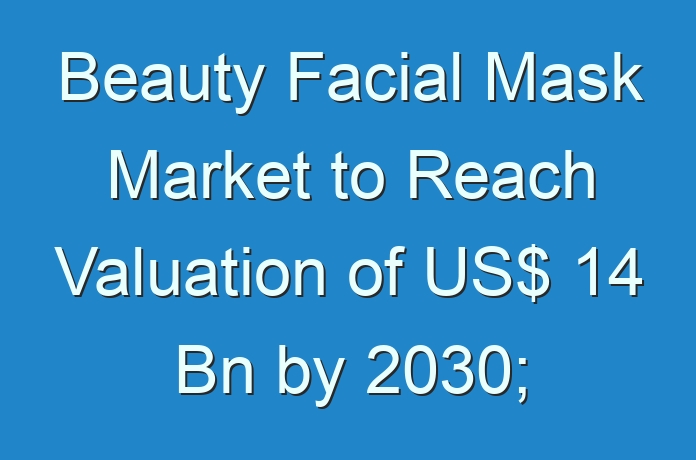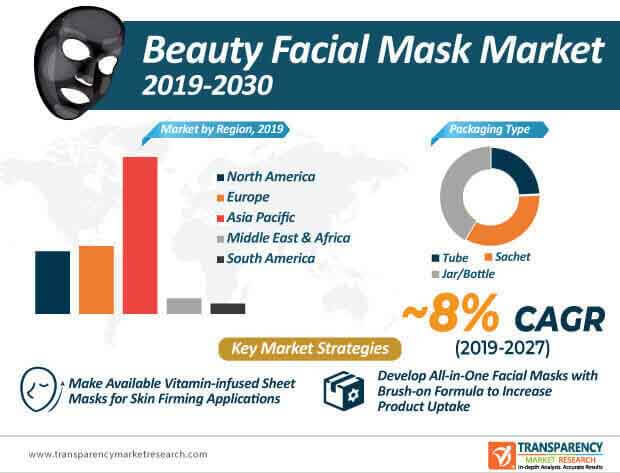
Beauty Facial Mask Companies Capitalize on Growing Internet Traffic amidst COVID-19 Lockdown Period
Since most individuals and employees are practicing home isolation due to the rapidly advancing coronavirus (COVID-19), companies in the beauty facial mask market are experiencing a steady rise in the number of online orders. However, supply chains are affected due to transportation restrictions in certain provinces and states of different countries. As such, several companies are increasing efforts to keep their products in stock, while other companies are unable to process online orders since workplaces are prohibited from any business operations.
Want to know the obstructions to your company’s growth in future? Request a brochure @ https://www.transparencymarketresearch.com/sample/sample.php?flag=S&rep_id=77140
On the other hand, online sales are creating a unique set of challenges for companies in the beauty facial mask market. It has been observed that many individuals are dissatisfied with the beauty facial masks and are posting negative online reviews that are tarnishing the credibility of beauty companies. Hence, companies are playing an active role to address negative reviews with prompt replies and round-the-clock delivery of products in case of discrepancies. This trend is positively helping companies who tie up with social media influencers to capitalize on the Internet traffic, which is at its peak during the COVID-19 lockdown period.
Vitamin-enriched Beauty Facial Masks Boost Product Uptake through Online Sales
All-in-one facial masks are gaining increased preference by users, owing to its brush-on formula. Companies in the beauty facial mask market are innovating in masks that limit breakouts. For instance, Patchology— a specialist in targeted skincare solutions is broadening its online distribution chains by marketing its Patchology SmartMud Masque to help individuals reduce the incidences of breakouts. As such, Korean beauty facial masks are gradually becoming Internet sensation. They are increasing their research spending in developing masks made from mineral-rich volcanic ash sourced from South Korea’s Jeju Island to boost product uptake.
Companies are increasing the availability of masks that purify and decongest blemish-prone skin. Such innovations by companies are boosting the revenue of the beauty facial mask market, which is estimated to reach a value of ~US$ 14 Bn by the end of 2030. There is a growing demand for vitamin C-enriched skin brightening masks to fend off the day’s pollutants.
Looking for exclusive market insights from business experts? Request a Custom Report
Skintellectual Generation Z: Rising Demographic for Companies Innovating in Natural Blends
Companies in the beauty facial mask market are into tapping opportunities to meet specific needs of generation Z users. For instance, Givaudan— a Swiss manufacturer of flavors, fragrances, and active cosmetic ingredients announced the launch of their product, ‘Sensory Crush’, for specific needs of the skintellectual generation in the form of three different formulas. Companies in the beauty facial mask market are experimenting with natural exfoliating blends such as papaya extracts to capitalize on opportunities in the rising generation Z demographic that associate beauty with confidence and self-expression. This is evident since the revenue of organic ingredients is expected for exponential growth, where the market is estimated to expand at a favorable CAGR of ~8% during the forecast period.
Innovative night blend formulations are grabbing the attention of users. These new blends involve natural and organic ingredients such as yuzu extracts and dragon fruit blends that restore skin’s moisture and suppleness.
Read Our Trending Press Release Below: https://www.prnewswire.com/news-releases/growing-popularity-of-using-ai-enabled-technologies-to-drive-smart-speakers-market-to-valuation-worth-us18-4-bn-by-2026-end-finds-tmr-report-301012542.html





